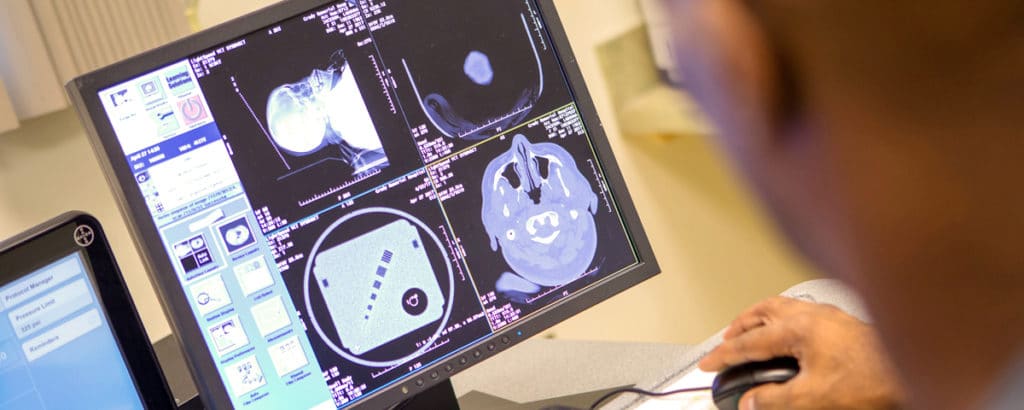Referrals

Outpatient Referrals
If this is a medical emergency, please call 911 and ask to be taken to Grady.
Grady’s Marcus Stroke and Neuroscience Outpatient Center accepts new patients with referrals from either primary care providers or other specialists.
Please ask your provider to complete the Grady Outpatient Referral Form and fax it to us. We will contact you to schedule an appointment. To check on the status of a referral for a new patient, please call (404) 616-9390 or (404) 616-4450.
Inpatient Referrals
- Perform STAT Head CT, Head/Neck CTA (CTP if available) in all ischemic strokes within 0-24 hours from time last seen well*
- Please call (404) 686-5500 ID 59747 immediately if you suspect a Large Vessel Occlusion (LVO)
* CTA/CTP should not delay the initiation of IV tPA.
Frequently Asked Questions
When Should We Suspect a LVO?
Most patients will have severe stroke symptoms, some will have a dense artery on CT but some patients with mild stroke symptoms or those without a dense artery may also have a LVO.
Why CT/CTA immediately upon arrival?
Vascular Imaging of the brain and neck vessels is useful early in the evaluation of stroke patients. The 2018 AHA guidelines state: “vascular imaging should be obtained as quickly as possible.”
What about renal function? Should I wait for creatinine levels?
There is strong data supporting the safety of CTA in stroke evaluation. The 2018 AHA guidelines state: “For patients who otherwise meet criteria for thrombectomy, it is reasonable to proceed with CTA if indicated in patients with suspected intracranial LVO before obtaining a serum creatinine concentration in patients without a history of renal impairment.”
Should CTA be done in patients with known renal impairment?
A meta-analysis of nonrandomized studies demonstrated that CTA/CTP are not associated with significant increase in risk of acute kidney injury in patients with stroke, even those with known chronic kidney disease. Considering the powerful effect of thrombectomy and the potentially major deleterious impact on clinical outcomes associated with time delays, obtaining a CT angiogram may be reasonable even in patients with known history of renal disease when acute LVO is suspected.
Should I do CTA in mild strokes?
Yes, as many as 30% of mild strokes (e.g. NIHSS 0-5) will harbor a LVO. About 1/3 of patients with initially mild symptoms will not be ambulatory at time of discharge. The presence of LVO is the strongest predictor of subsequent deterioration in mild strokes.
What Is the Time Window for Considering CT/CTA?
Patients with disabling stroke symptoms should undergo emergent clinical and imaging evaluation within the first 24 hours from time last seen well as two randomized clinical trials (DAWN and DEFUSE 3) showed a benefit in the extended window.
Should I do CT Perfusion?
CTP can expedite the transfer decision making process but is not needed in all cases, especially those presenting within 6 hours from time last normal/well. In case of uncertainty regarding need for CTP, please call LYSIS to discuss the case.
Acute Stroke Emergencies
FOR ACUTE ISCHEMIC STROKE EMERGENCIES
- Dial (404) 686-5500
- Enter page ID 59747 (LYSIS)
- Enter your Direct Callback Number – include area code and full 7-digit number
FOR TRANSFER OF PATIENTS WITH HEMORRHAGIC EVENTS
- Call the Grady Transfer Center (404) 616-4061
